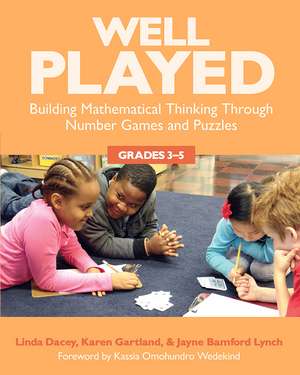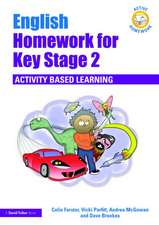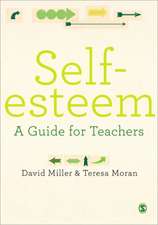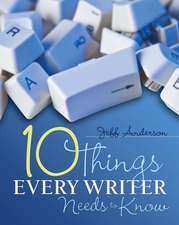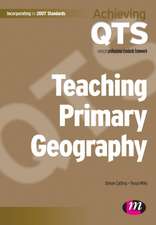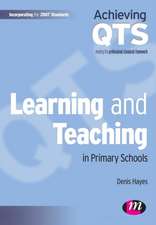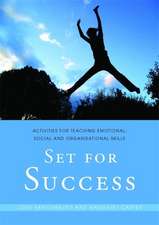Well Played, Grades 3-5: Building Mathematical Thinking Through Number Games and Puzzles
Autor Linda Dacey, Karen Gartland, Jayne Bamford-Lynch, Jayne Bamford Lynchen Limba Engleză Paperback – 30 iun 2015
- Explanations of the mathematical importance of each game or puzzle and how it supports student learning
- Variations for each game or puzzle to address a range of learning levels and styles
- Classroom vignettes that model how best to introduce the featured game or puzzle
Preț: 282.72 lei
Nou
Puncte Express: 424
Preț estimativ în valută:
54.12€ • 58.80$ • 45.49£
54.12€ • 58.80$ • 45.49£
Carte tipărită la comandă
Livrare economică 21 aprilie-05 mai
Preluare comenzi: 021 569.72.76
Specificații
ISBN-13: 9781625310323
ISBN-10: 1625310323
Pagini: 232
Dimensiuni: 203 x 254 x 18 mm
Greutate: 0.57 kg
Ediția:1
Editura: Taylor & Francis
Colecția Routledge
Locul publicării:Oxford, United Kingdom
ISBN-10: 1625310323
Pagini: 232
Dimensiuni: 203 x 254 x 18 mm
Greutate: 0.57 kg
Ediția:1
Editura: Taylor & Francis
Colecția Routledge
Locul publicării:Oxford, United Kingdom
Public țintă
Professional Practice & DevelopmentRecenzii
The authors created this easy-to-use book with a goal of increasing the potential of games and puzzles to deepen students’ conceptual learning and computational fluency (p. 2). The target audience is teachers of grades 3–5; the targeted skills and concepts are appropriate for students at these grade levels.
Well Played for grades 3–5 has chapters with games and puzzles addressing the mathematical concepts of base-ten numeration; addition and subtraction; multiplication and division; mixed operations; and fractions. Each chapter includes five games or puzzles and a section of online games and apps that address the concept. For each game or puzzle, authors Dacey, Gartland, and Lynch explain why it has been included, how to play the game, how it looks in a classroom setting, teacher look-fors, variations of the game, exit card ideas, and extension
activities. The appendix includes all game boards and additional materials required to play the games.
As a math coach, my favorite chapter is entitled, “Supporting Learning through Games and Puzzles.” It explores how to use games and puzzles in the classroom and offers excellent suggestions for both beginning and experienced teachers on topics from teaching game etiquette to setting goals and assessing learning, fostering productive discussions, and organizing games in the classroom.
Although several of the games in this book are variations on old favorites, many are new. The inclusion of the mathematics behind the games, the exit cards, and the ideas for variations make this a book that I am sure I will use repeatedly and will recommend to classroom teachers.
—Amy Henderson, Harrisonburg City Schools, Virginia.
Well Played for grades 3–5 has chapters with games and puzzles addressing the mathematical concepts of base-ten numeration; addition and subtraction; multiplication and division; mixed operations; and fractions. Each chapter includes five games or puzzles and a section of online games and apps that address the concept. For each game or puzzle, authors Dacey, Gartland, and Lynch explain why it has been included, how to play the game, how it looks in a classroom setting, teacher look-fors, variations of the game, exit card ideas, and extension
activities. The appendix includes all game boards and additional materials required to play the games.
As a math coach, my favorite chapter is entitled, “Supporting Learning through Games and Puzzles.” It explores how to use games and puzzles in the classroom and offers excellent suggestions for both beginning and experienced teachers on topics from teaching game etiquette to setting goals and assessing learning, fostering productive discussions, and organizing games in the classroom.
Although several of the games in this book are variations on old favorites, many are new. The inclusion of the mathematics behind the games, the exit cards, and the ideas for variations make this a book that I am sure I will use repeatedly and will recommend to classroom teachers.
—Amy Henderson, Harrisonburg City Schools, Virginia.
Notă biografică
Linda Dacey, consultant and professor emeritus at Lesley University, has always believed that learning mathematics should be conceptually based and enjoyable. Her major interests are problem solving, number sense, and strategies for differentiation. Linda is the coauthor with Anne Collins of the Zeroing in on Number and Operations series, The Xs and Whys of Algebra, and It's All Relative. Karen Gartland is a mathematics coordinator and classroom teacher at Groton-Dunstable Middle School. She enjoys working with students of all ages with a focus on conceptual understanding of mathematics through critical thinking and application as well as best practices for integrating technology. Karen is also an adjunct faculty member at Lesley University. Jayne Bamford Lynch is a district math instructional coach in Cambridge, Massachusetts, where she spends most of her days in elementary classrooms supporting coaches, teachers, and students. Jayne presents workshops for teachers, administrators, and parents on a multitude of topics and is also a National Faculty member of the School of Education at Lesley University.
Cuprins
Chapter 1: Introduction; Chapter 2: Supporting Learning Through Games and Puzzles; Chapter 3: Base Ten Numeration; Chapter 4: Addition and Subtraction; Chapter 5: Multiplication and Division; Chapter 6: Mixed Operations; Chapter 7: Fractions
Descriere
Students love math games and puzzles, but how much are they really learning from the experience? Too often, math games are thought of as just a fun activity or enrichment opportunity.
